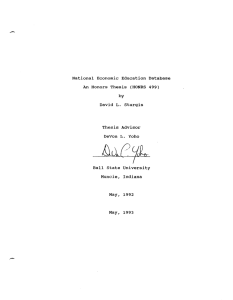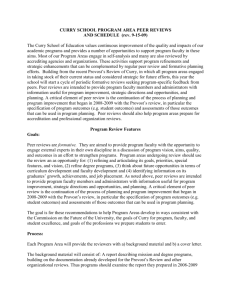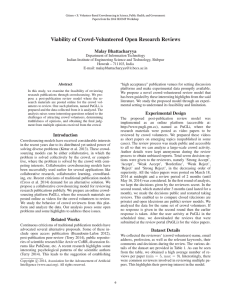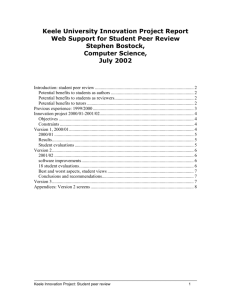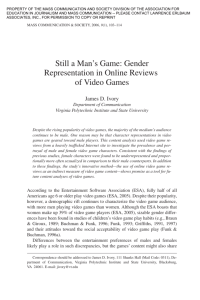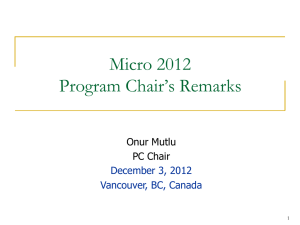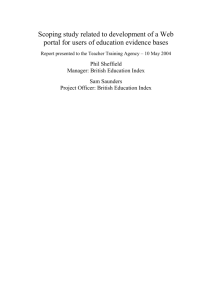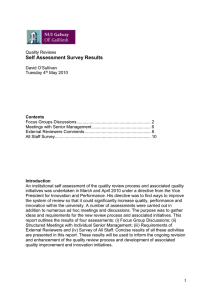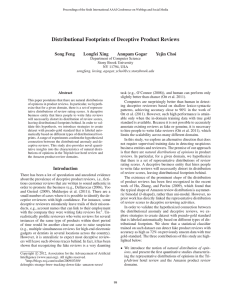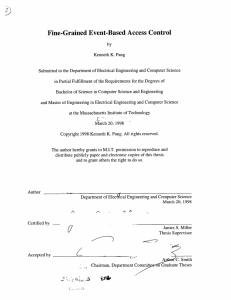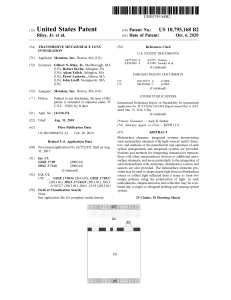Notes for Reviewers - Cardiff University
advertisement
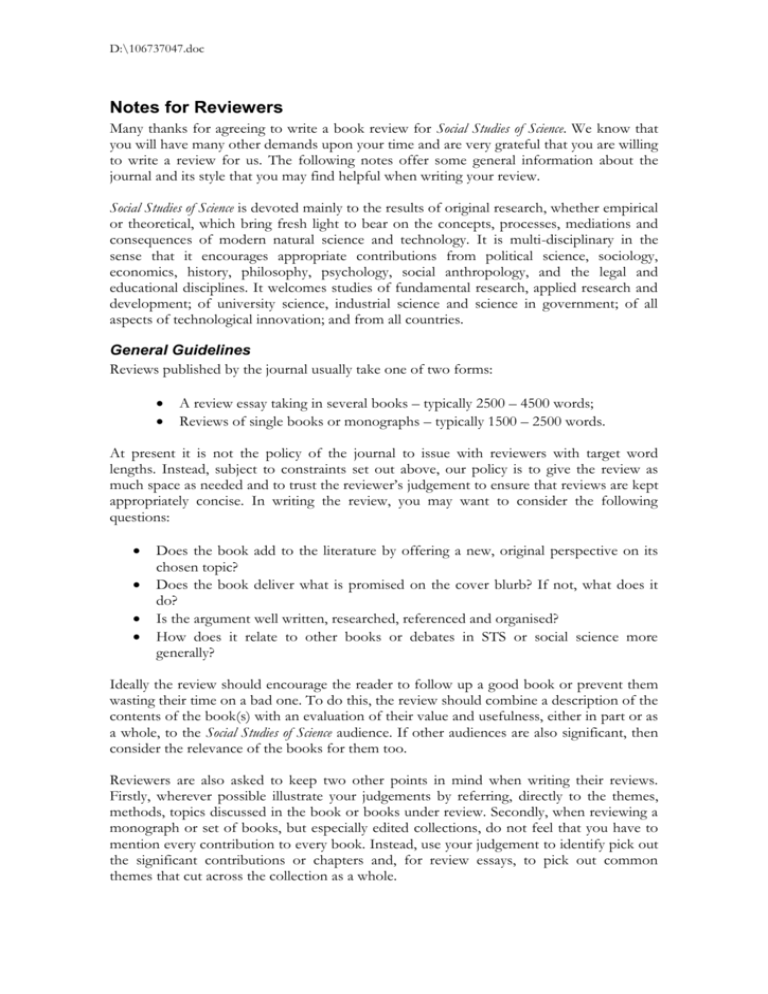
D:\106737047.doc Notes for Reviewers Many thanks for agreeing to write a book review for Social Studies of Science. We know that you will have many other demands upon your time and are very grateful that you are willing to write a review for us. The following notes offer some general information about the journal and its style that you may find helpful when writing your review. Social Studies of Science is devoted mainly to the results of original research, whether empirical or theoretical, which bring fresh light to bear on the concepts, processes, mediations and consequences of modern natural science and technology. It is multi-disciplinary in the sense that it encourages appropriate contributions from political science, sociology, economics, history, philosophy, psychology, social anthropology, and the legal and educational disciplines. It welcomes studies of fundamental research, applied research and development; of university science, industrial science and science in government; of all aspects of technological innovation; and from all countries. General Guidelines Reviews published by the journal usually take one of two forms: A review essay taking in several books – typically 2500 – 4500 words; Reviews of single books or monographs – typically 1500 – 2500 words. At present it is not the policy of the journal to issue with reviewers with target word lengths. Instead, subject to constraints set out above, our policy is to give the review as much space as needed and to trust the reviewer’s judgement to ensure that reviews are kept appropriately concise. In writing the review, you may want to consider the following questions: Does the book add to the literature by offering a new, original perspective on its chosen topic? Does the book deliver what is promised on the cover blurb? If not, what does it do? Is the argument well written, researched, referenced and organised? How does it relate to other books or debates in STS or social science more generally? Ideally the review should encourage the reader to follow up a good book or prevent them wasting their time on a bad one. To do this, the review should combine a description of the contents of the book(s) with an evaluation of their value and usefulness, either in part or as a whole, to the Social Studies of Science audience. If other audiences are also significant, then consider the relevance of the books for them too. Reviewers are also asked to keep two other points in mind when writing their reviews. Firstly, wherever possible illustrate your judgements by referring, directly to the themes, methods, topics discussed in the book or books under review. Secondly, when reviewing a monograph or set of books, but especially edited collections, do not feel that you have to mention every contribution to every book. Instead, use your judgement to identify pick out the significant contributions or chapters and, for review essays, to pick out common themes that cut across the collection as a whole. Style and Formatting When preparing their review, contributors are asked to pay careful attention to the following important points of detail: The review should begin with a brief title, followed by the bibliographic reference(s) for the book(s) being reviewed. Please include the number of pages, but don’t worry about the prices and ISBNs English spelling should be used throughout, except in the case of words where the American ‘z’ has generally replaced the ‘s’: e.g., organize. Single quotation marks should be used throughout, with double quotation marks reserved for embedded quotes. Italic type will be used for the titles of books and journals referred to in the text and reference list, and for the least familiar foreign words. Headings should be bold and flush with the left margin, subheadings should be in italic, also flush with the left margin. The endnotes should be double-spaced and numbered consecutively. They should be referred to in the text by numerical superscripts. Where necessary reviews should include a References section, in which cited sources are listed in alphabetical order. The following sample references illustrate the journal’s style: Browne, Janet (1998) ‘I Could Have Retched All Night: Charles Darwin and his Body’, in C. Lawrence & S. Shapin (eds), Science Incarnate: Historical Embodiments of Natural Knowledge (Chicago, IL: The University of Chicago Press): 240-87. Collins, H.M. (1999) ‘Tantalus and the Aliens: Publications, Audiences, and the Search for Gravitational Waves’, Social Studies of Science 29/2: 163-97. Lawrence, Christopher & Steven Shapin (eds) (1998) Science Incarnate: Historical Embodiments of Natural Knowledge (Chicago, IL: The University of Chicago Press). Kary Mullis (1998) Dancing Naked in the Mind Field (New York: Pantheon Books). Prigogine, Ilya & Isabelle Stengers (1984) Order out of Chaos: Man’s New Dialogue with Nature (New York: Bantam Books). Note: References to weekly academic journals should give both volume number and the full date, thus: Science 298 (4 October 2002): 1052-57. The Editors may alter manuscripts wherever necessary to make them conform to the stylistic and bibliographic conventions of the journal. A copy of the page proofs will be sent to the author(s) for approval. What to Send When the review is complete, please send a double-spaced copy of the review, together with a brief bio-sketch and contact details (post, fax and email), as an email attachment to the Reviews Editor at EvansRJ1@Cardiff.ac.uk Please ensure that any files sent are compatible with Microsoft Word circa 2002. If you are in doubt, please use an older version of Word (e.g. 97) or the Rich Text Formal option (.rtf) when you save the file and I’ll sort it out from there. Once again, many thanks for agreeing to write a review for the journal. 2
